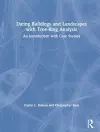
Dating Buildings and Landscapes with Tree-Ring Analysis
2 authors - Hardback
£135.00
Darrin L. Rubino is a Professor of Biology at Hanover College, USA. He joined the Hanover faculty in 2002. He is a graduate of Thiel College (1995) and earned his Masters from Clarion University of Pennsylvania (1997) and PhD from Ohio University (2002). He has been a member of the Indiana Academy of Science since 2002. In addition to serving as the President of the Academy, Darrin served as Chair and Vice Chair of the Academy’s Botany Section on several occasions. He became a Fellow of the Academy in 2013. Darrin is a forest ecologist and studies wood decay, vascular plant community composition, non-native plants, and woody debris (dead and down trees). His main research interest is dendrochronology, the study of tree rings. He uses patterns of tree rings to understand the influence of historic human impacts and natural processes on forest structure, function, and composition. In 2007, 2012, and 2018 Darrin was awarded the Arthur and Ilene Baynham Award for Outstanding Teaching at Hanover College, and he won the College’s Daryl R. Karns Award for Scholarly and Creative Activity in 2014.
Christopher Baas is an Associate Professor in the Department of Landscape Architecture at Ball State University, USA, and a Registered Landscape Architect. Following a 20-year career as a practicing Landscape Architect, he joined the Ball State University faculty in 2008. He is a graduate of Ball State University (1988) and earned his Masters from the University of Wisconsin–Madison (1996). He teaches planning and design studios, as well as historic preservation and landscape restoration courses. Christopher’s scholarly focus is documenting and interpreting historic cultural landscapes. He is interested in the work of early 20th-century landscape architect George Kessler’s park and boulevard design of Hoosier cities, and Danish landscape architect Jen Jensen’s conservation of the Indiana dunes. Baas is also active in the documentation and interpretation of southeast Indiana’s 19th-century culture of growing, pressing, and shipping hay.